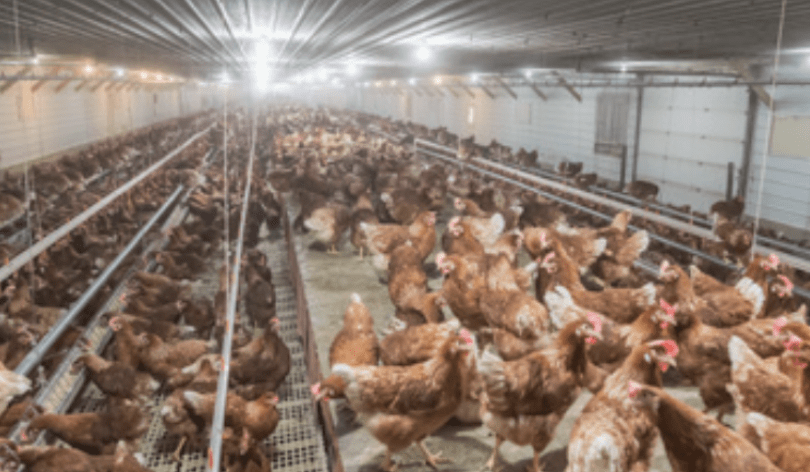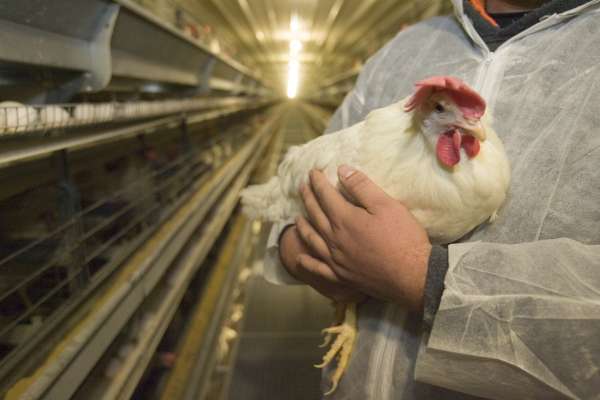Did you know that over 10 billion eggs are produced every year here in Ohio? Our recent virtual field trip showed participants where those eggs come from—facilities that are conventional, cage-free, or organic. Ohio Poultry Association (OPA) bird health programs manager Jenna Gregorich hosted the event, and OPA executive vice president Jim Chakeres shared about egg production in our state.

Conventional egg production systems such as Trillium and Herzfeld have been developed based on scientific research on what is best for birds. They are indoors to provide protection from parasites, disease, and predators. Birds live in small groups in cages with access to feed and water 24 hours a day. Lighting mimics outside daylight cycles.

Cage free systems such as Cooper Farms come in two types, with birds either all on one level or in an aviary barn with perches at different levels. Most Ohio systems are the aviary type. These facilities also provide nest boxes and areas for the birds to take dust baths.

Organic systems such as Outward Farms produce organic eggs, determined by the chickens’ diet, which must consist of 100% organic ingredients. Specific health care protocols are followed in regard to vaccinations and treatment. Birds have access to outdoors, although not all want to go outside.
How do producers make sure birds are happy? Chakeres detailed the ways these producers work to provide the perfect environment. Experts help formulate quality feed for nutritional needs. Ventilation systems make sure the air is clean and at the right temperature. Sensors provide more feed when needed and alert monitors if water flow problems occur.
Manure from egg production facilities is collected and reused as farm fertilizer. This promotes sustainability and helps the environment.
Are there any differences in the eggs coming from these different types of housing? “It depends on what the consumer wants to bring home. Different production systems involve different costs, and that can increase the cost of the eggs. But taste and nutrition are the same from one egg to another,” Chakeres said.





Share this